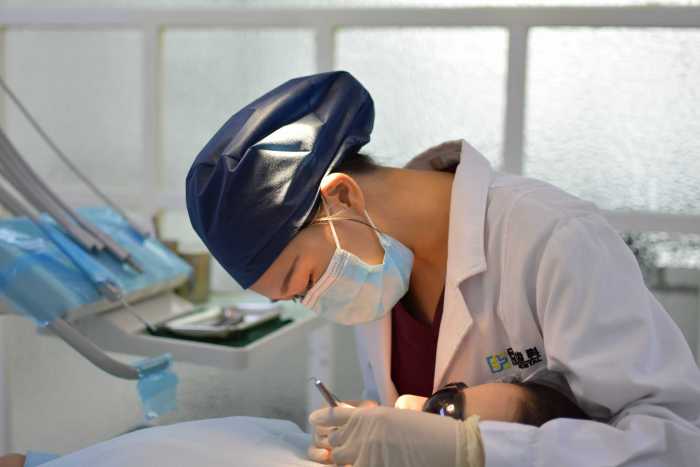We are always warned to take care of our skin, paying special attention to moles in order to prevent cancer. But how do you know what to look for? What signs indicate that a mole may become cancerous? What are the modern methods of removing it?
Why do moles form?
The exact etiology of moles is currently unknown, although research suggests genetics and sun exposure as the key factors in moles formation.
A mole, or nevus, is a collection of brown cells that are usually found in the skin or a mucous membrane. These cells are called melanocytes and are responsible for sunburn and dark skin tone. Newborns do not have moles. They first appear between 6 months and 1 year of age and may then appear until maturity.
The appearance of moles in a specific place on the body may be due to a person’s DNA. New moles sometimes appear with prolonged exposure to the sun.
Doctors usually identify at least three more reasons:
- hormonal changes,
- viruses,
- trauma.
As a result of hormonal disruptions (caused by stress, illness, childbirth, and so on), new moles can appear as well as the old ones can disappear.
Who is most at risk of developing moles?
A person faces an increased risk of developing moles (including benign, non-hazardous moles and cancers such as melanoma) if:
- there were severe sunburns with blisters;
- a person has light skin;
- a person is naturally blond or red;
- a person has light eyes;
- freckles appear easily;
- the skin practically does not tan;
- a person often goes to the solarium;
- a person lives near the equator or at high altitudes;
- the person already has 50 or more “normal” moles.
Are all moles “bad”?

The short answer is no, but there are some nuances. In the non-medical community, patients tend to use the word “mole” as a general term to refer to any dark bulging formation. Moles are not cancerous by themselves, but moles with certain qualities can transform into dangerous cancers such as melanoma.
Dermatologists use the term “common” to describe moles that do not show signs that a mole may become melanoma. These moles are not dangerous, they are often due to genetics.
The term “atypical” is used to describe a mole that has certain qualities that signal the possibility of developing melanoma.
Signs that you need to remove a mole
You can find out if a mole is atypical or common using the ABCDE test (transcript below). Doctors advise doing these regular self-examinations (in addition to the yearly checkup by a dermatologist), paying particular attention to new, dark or lumpy growths.
This is what the ABCDE method means for the diagnosis of skin cancer.
A – asymmetry;
B – border: moles with uneven or jagged edges are characteristic of melanomas.
C – color: look for moles that are unevenly colored.
D – diameter: check for new moles with a diameter greater than 6 millimeters.
E – evolution: look for moles that grow in size, change color, or change shape. You may also develop new symptoms such as itching or bleeding.
Why is it so important? Melanoma is a malignant tumor that develops from melanocytes – pigment cells that produce melanins. By appearance, melanoma is very similar to ordinary moles. In 90% of cases, melanoma is curable with a timely diagnosis.
If there are 10 or more atypical moles on the body, the likelihood of developing melanoma rises 12 times. In addition to the annual check-up with a dermatologist, regular self-examinations should be carried out, making sure to check not the most obvious areas, such as scalp, nails, skin under the breasts and feet.
Can a mole be removed for aesthetic purposes?

If studies have confirmed that the mole is not atypical, then you can remove it if it bothers you. In these cases, the mole is usually lightened to skin color with a laser rather than excised.
The first step is to make sure the mole is typical and safe. For this, the expert examines the mole with a confocal microscope. After confirming the diagnosis, anesthesia is done and the procedure is performed using a cosmetic laser.
It is worth remembering that there is no medical reason for removing typical moles: this is only your personal decision.
Using home remedies to remove moles
Hopefully, this won’t come as a surprise, but under no circumstances should you try to remove the mole yourself.
How are moles removed in the clinic?
Removing a mole is not the most pleasant experience, but you should know that by removing it, you can get rid of any potentially malignant formations.
There are several proven methods for removing various forms of neoplasms:
- surgical excision with a scalpel;
- laser removal;
- radio wave removal;
- electrocoagulation.
Removal with liquid nitrogen is ineffective as the removal depth cannot be controlled.
If the formation is bumpy and has a thin base, then it is better to remove it with a laser or radio wave method.
This is a bloodless method of removal since vascular coagulation occurs at the same time, the surrounding tissue is not injured, and it is practically painless. Regeneration lasts 10-12 days and is gentle.
If the formation is asymmetric and subcutaneous, if it grows and aches, then the expert uses the excision method most often. If healthy tissues are affected, it is imperative to undergo a histological analysis.
Neoplasms cannot be removed if the patient has been in the sun for three weeks or is planning a trip to southern countries. This can contribute to inflammation. It is necessary to avoid visiting saunas, baths and lengthy water procedures. Otherwise, it will lead to scarring, since the epidermis is in the process of regeneration and is weakened.
First, a dermatologist injects lidocaine (a pain reliever) into the area, and this is where the pain comes into play. After the injection of lidocaine, the pain goes away. Deep diagnostics with dermatoscopy is also required.

Dermatoscope is an apparatus for enlarging the image of a neoplasm. So you can determine the nature of the neoplasm.
During the procedure, do your best to relax, think of something positive. As a rule, you need to apply two layers of seams, which are removed after some time.
If a small mole is being removed, you can use a “dermablade” (a multifunctional laser), so stitches do not need to be applied.
Follow-up care
Each case is different, so you need to follow the exact instructions of your doctor.
After removing the mole, it is best to use an antibiotic ointment and a cream containing petroleum jelly. You need to apply a bandage until everything heals and the stitches are removed.
For the first 24 hours, you cannot wet the wound and remove the bandage that was applied during removal. To speed up healing, you can use products with panthenol and glycerin, since they will prevent scarring.
Will a scar remain after removing a mole?
Unfortunately, yes: where there used to be a mole, a tiny scar forms on the skin.
Every time the skin is cut, a scar is left. It all depends on the type of skin and the age of the patient. If the skin is dark, the scars heal worse and are formed more easily.

How to prevent the formation of moles?
Remember that genetics and sun exposure play a key role in the formation of moles. The development of moles or melanoma can be significantly reduced by using proper sun protection.
Conclusion
Remember that moles are not inherently dangerous, but it’s best to be on the safe side. There are typical and atypical moles, and atypical moles (which have one of several properties listed in the ABCDE) can develop into skin cancers such as melanoma. Only a dermatologist can correctly diagnose the type of mole and decide whether it should be removed or not.











